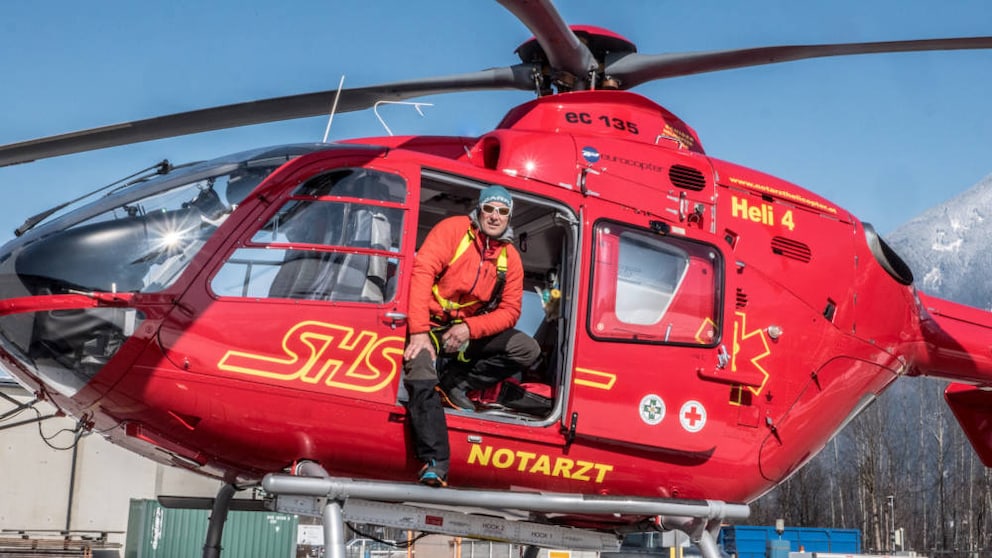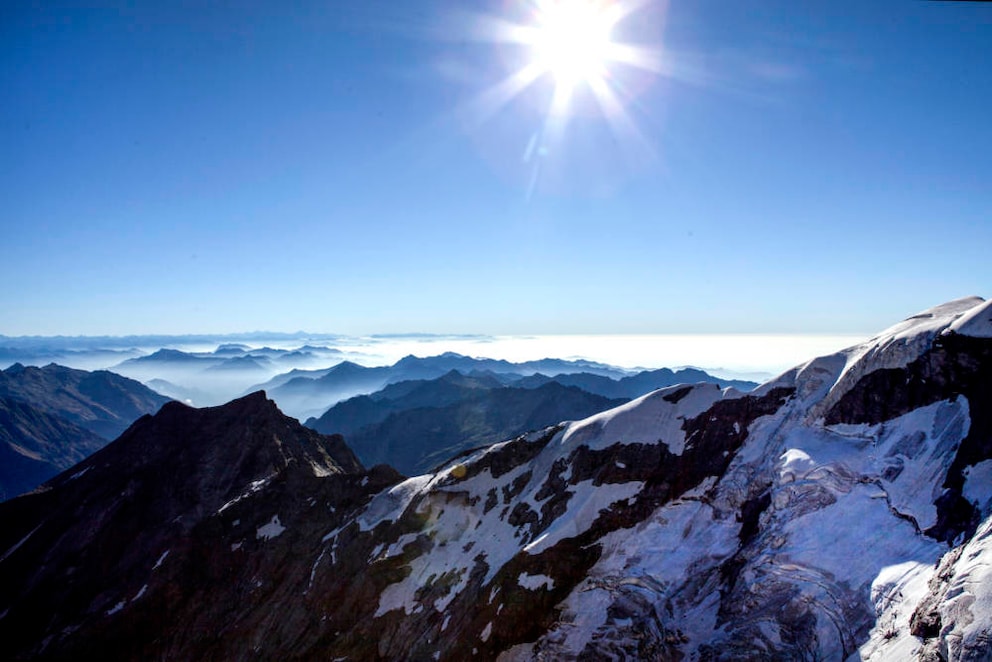July 12, 2025, 3:36 pm | Read time: 8 minutes
Hiking is a true national pastime in Germany—and deservedly so. However, as temperatures rise, many people are drawn back to the mountains, including numerous individuals who underestimate the challenges. Those who venture into the mountains unprepared not only risk their own safety but also endanger others. Beginners from flatland areas, in particular, tend to misjudge heat, elevation gain, and trail length. An experienced mountain guide and doctor shared with FITBOOK what truly matters in tour planning—and which mistakes can be fatal in the worst-case scenario.
Every year, millions of Germans go hiking, and every year, we read about accidents in the mountains where people lose their lives. But can this be prevented? In most cases, yes, says anesthesiologist and air rescue emergency physician Dr. Ulrich Steiner in an interview with FITBOOK, who is called out when the damage is already done—or when the hiker is off the trail.
Overview
How Many Hiking Accidents Occur Annually?
According to the DAV mountain accident statistics, the absolute number of accidents reached a new high in 2022, while the Alpine Club recorded more members than ever before. Despite the ongoing mountain boom, the number of fatalities fortunately remained at a comparatively low level. Notably, in the high-altitude touring area, there were more accidents due to rock and ice falls. This underscores the importance of responsible handling of changing conditions in the high mountains.1
These Mistakes Lead to Hiking Accidents
Talking to Dr. Steiner about his job, you immediately get the impression that he has turned his calling into his profession. After all, he loves the mountains—besides his passion for helping people as a doctor—and is a certified mountain and ski guide. But that’s not all: You also get the impression that most hiking accidents reflect our times. Faster, higher, further. And his explanations for this sound plausible.
He identifies three main culprits:
- Overestimation of abilities
- Lack of planning
- Time pressure
The last two points often correlate strongly. This can be illustrated by the following example that Dr. Steiner used in the interview.
The (Worst-Case) Classic
A city dweller with little time flies (stress!) to the mountains and immediately takes the cable car up to 2,500 meters. If he travels to the Western Alps, the mountain hotels and huts are often even higher, as 81 of the 82 Alpine four-thousanders are located there. Still stressed from everyday life and the journey, he immediately climbs to a hut at 3,000 meters. He is not acclimatized at all, perhaps a smoker (other risk factors include: being overweight, high blood pressure, or diabetes), and soon it’s: “Welcome to the best ingredients for a heart attack,” as the expert explains.

The core problem is: Extra stress due to a lack of acclimatization. Stress is about the last thing a flatlander with a 50-hour workweek needs on vacation.
At this point, one could, in the spirit of the times, also bring social media into play (Dr. Steiner mentions the regulars’ table here). What both have in common: the frequent need to impress viewers and listeners with one’s own feats and particularly beautiful panoramic photos.
The expert outlines a real (and typical) case: Manager, early 50s, arrives in the evening and goes straight to the glacier on the second day. The problem: not trained, smoker, and high blood pressure. The result: heart attack on the ski slope. “Had he skied leisurely in the valley for the first two days and only then gone up to the glacier, the risk would have been lower,” he explains.
Proper Preparation Is Crucial
Preparation is everything. And it starts long before the vacation. This includes absolute basics like
- regular exercise
- proper equipment
- planning
Planning means not only hiking maps but also knowing where to call in an emergency. This may sound like a detail, but: If something happens on the mountain, the emergency number (in Switzerland, for example, 1414) is still one of the most important survival factors and should definitely be saved in your phone. According to Dr. Steiner, planning also means: If you know you’re going to a region with little network coverage, you need to have a satellite phone (which can now be rented)! GPS-enabled devices are important because they allow you to determine your exact location to be found quickly. Planning also means acclimatization!
Expert tip: Spend the first night in the valley and head into the mountains refreshed the next morning.
Another Common Hiking Mistake
Many focus only on the summit and forget that they also need energy reserves for the descent.
Equipment can also be a matter of life and death. Can you walk well in the new hiking boots? Do you get blisters? How do they perform on wet rock? You don’t want to find all this out during the descent. And don’t forget warm clothing! Because if a cold front suddenly moves in and you miscalculate (or don’t calculate) the time to the next hut, you’ll freeze in your summer clothes faster than you think.
Altitude Is Not the Real Danger
In the end, it’s not the altitude itself or lack of oxygen (“thin air”) that can make hiking dangerous. Although oxygen deficiency at altitude “would not tolerably play a role”—meaning it wouldn’t be beneficial to health—the heart attack-inducing mechanisms are actually different, according to Dr. Ulrich:
The unfamiliar physical exertion while hiking stresses the body and can lead to dangerous blood pressure spikes (blood pressure spikes occur when blood pressure rises rapidly for a short time). Additionally, the pulse is elevated for extended periods while hiking, reducing the heart’s blood supply. When several such stressors combine, the risk of a heart attack can increase rapidly.
Cell Phone Technology – A Blessing?
Air rescue emergency physician Dr. Steiger says: Yes! But he also points out a major problem, namely, misuse. “People push themselves to their limits and beyond because they know: In good weather, we’ll be rescued from the mountain anyway. But if the weather turns and rescue becomes impossible, this recklessness can cost lives.”
Yet Altitude Can Be Dangerous
Because starting at 2,500 meters (threshold altitude), susceptible individuals can develop life-threatening forms of altitude sickness, which can be fatal without treatment. To prevent altitude sickness, one must adhere to an important rule of thumb.
According to Dr. Steiner, the sleeping altitude should only be increased by 300 to 500 meters per day to allow the body to acclimatize. This means: After a night at, for example, 2,500 meters, the next sleeping quarters should ideally be set up below 3,000 meters.
Important: For all forms of altitude sickness, descent is the most important therapy!

This Mountain Is Known for Altitude Sickness
Altitude medicine specialist Dr. Steiner—who also volunteers on the board of the German Society for Mountain and Expedition Medicine*—told FITBOOK that a particular mountain is especially known for its many and particularly severe cases of altitude sickness: Mount Kilimanjaro (5,895 meters) in Tanzania. Why? Because the ascent is not particularly technically challenging, allowing the altitude to be “mercilessly increased.” The result: a frequent occurrence of cerebral edema, which can lead to death if untreated. According to the expert, the problem begins with travel providers who squeeze Kilimanjaro into 7-day tours. A clear case of cost-time pressure at the expense of acclimatization!
And So This Is Not Misunderstood
The problem of life-threatening cerebral edema does not start in Africa but already in Europe. Dr. Steiner knows from colleagues in the Western Alps that they regularly rescue hikers from mountain huts because they have developed severe forms of altitude sickness. If the affected individuals can be quickly evacuated to lower altitudes, most cases turn out well. However, if the weather prevents air rescue, one can still die from it even today.
Hiking Is Not Dangerous
Now, one might get the impression that hiking is a dangerous hobby. Dr. Steiner counters this by saying that many people fall because they suffer a heart attack beforehand and temporarily lose control (or even consciousness). So it’s not the mountain but their own body that actually kills them.
And the statistics support him. According to figures from the German Alpine Club (DAV), so few DAV members had accidents in the mountains in 2016 and 2017 as last seen in the 1950s. And the total number of all mountaineers in the German Alps remained stable (low) in recent years, according to information from the Süddeutsche Zeitung, even though more and more people are flocking to the mountains.

In 15 Minutes! These 5 Nutrient-Rich Air Fryer Recipes Will Save Your Dinner

Only one in five children gets enough exercise

With Back Squats, You Can Really Kick-Start Calorie Burning
Conclusion
So you can confidently lace up your hiking boots if you follow these three golden rules:
- Take your time.
- Plan your trip thoroughly.
- And realistically assess your strengths and skills.
Have fun!
*The “German Society for Mountain and Expedition Medicine,” or “bexmed,” aims to train and educate doctors in alpine and expedition medicine for accident and disease prevention in the mountains.

